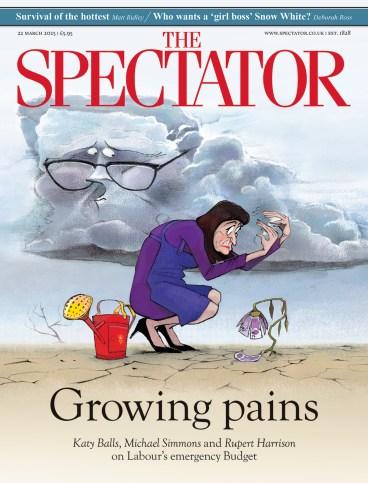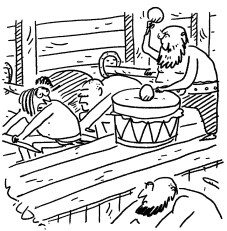
In the famous ‘Rainbow Portrait’ of Elizabeth I her gown is embroidered with eyes and ears, a reference to her efficient surveillance of the threats to the emerging nation state that was Tudor England. ‘Five Eyes’ is the modern equivalent of the concept but applied to the general security of the Anglosphere: the UK, the US, Canada, Australia and New Zealand. For an alliance that was originally one of listeners more than watchers, it might have been more correctly called ‘Five Ears’, but that name would hardly have conveyed its permanent vigilance.
The existence of Five Eyes owes more to historical accident than deliberate design – it could never be rebuilt
Thanks to the success of the Enigma operation, Britain emerged from the second world war persuaded of the importance of interception, signals intelligence (‘sigint’) and decryption. In 1946 the UKUSA treaty was signed (the secret text of which was not released until 2010), establishing a high degree of co-operation between Britain and America in the collection and analysis of sigint.
The alliance has proved to be durable and highly valuable. It combines the sophistication and expertise of the UK’s GCHQ with the large-scale capability of America’s National Security Agency (NSA). The degree of integration between the two intelligence organisations is unique given the sensitivity of their roles. Its strength means that over the years it has not been much affected by changing governments and administrations, and it is the keystone of the ‘Special Relationship’.
The arrangement was expanded to include Canada in 1948, and to Australia and New Zealand in 1956. The spread of Five Eyes from the Canadian Arctic to the Southern Oceans and beyond allowed it a vital collection capability during the Cold War. Its existence owes more to historical accident than deliberate design – it could never be rebuilt. And it is still strategically important today.
The explosion in communication with the development of the internet and social media has, of course, utterly changed the context in which Five Eyes operates. Within the morass of the online world, terrorists, international gangs and rogue states could and would do much more damage if it were not for Five Eyes’ selective filtering and analysis.
However, the idea that ‘everything everywhere’ is being shared by intelligence and security agencies across the Anglosphere is misleading. When the UK was in the EU, our fellow member states were often suspicious of what they saw as our loyalty to an alliance which was not aligned with their perception of European interests. What they failed to understand was the compartmentalisation which exists within Five Eyes, allowing each country to maintain its own regional security commitments and relationships. The alliance is therefore covered with barriers which cannot be crossed, except possibly in moments of very severe crisis. ‘NoForn’ – i.e. no foreigners – is a commonly used US security classification, as is ‘UK Eyes Only’ in this country.
Contrary to the myth propagated by the likes of Edward Snowden, Julian Assange and other self-proclaimed whistleblowers, Five Eyes is not an anglophone conspiracy to do down the rest of the world and to evade national regulations. But protection of this remarkable resource requires secrecy. Secrecy demands ‘no comment’, and that means no explanation when Five Eyes is pulled through the media by an embittered former sigint employee or an anarchist who believes the nation state must account publicly for all its actions. The tension between the fact of GCHQ’s or the NSA’s existence and the urge for privacy is simply a condition that we cannot escape in a world of mass communication. Only those with something malign, criminal or conspiratorial to hide should be concerned.
Five Eyes is not only about collected information. It is also about sharing. Here the picture becomes complicated, especially when the security of two-legged sources needs to be given primary consideration. At the heart of the intelligence and security community lies an existential question: intelligence is collected to be used to inform decision making, but how do you make it usable without risk to the source if the source’s access is near to exclusive?
Since the most important spies always enjoy top-notch access, all the great espionage cases of the Cold War eventually raised serious questions about the source’s survival as the penetrated party began to realise that their inner citadel of secrets must be compromised. The same danger remains today. The need to stave off that denouement explains the complex processes which determine the distribution and use of highly sensitive intelligence. There are no rules, only decisions based on judgments of risk. Even between the closest of allies, raw intelligence is often withheld for reasons of source protection. Politicians who play fast and loose with politically potent intelligence are a security menace. So when you read in the media that Britain is withholding intelligence from the Donald Trump administration for this or that reason, such stories mean next to nothing unless the author knows the precise context (which is highly unlikely).

Trump’s suspension of US intelligence sharing for Ukraine, however, is different. If a country is at war, it hurts immediately at the tactical level if switches are thrown to cut off data exchange and overhead from satellites. It’s easy to understand why a bullied Kyiv was so rapidly brought to heel by Washington. US support for Ukraine has no institutional hinterland. It is geopolitically young and fragile – here today and possibly gone tomorrow.
In comparison, Five Eyes is as old and dependable as the hills. It has acquired institutional strength through its treaty status and by weathering many crises. That is what it will be doing now. There are points of stress, but do not expect Five Eyes to start losing its sight. There never was a time in recent history when the Anglosphere needed the alliance more.








Comments